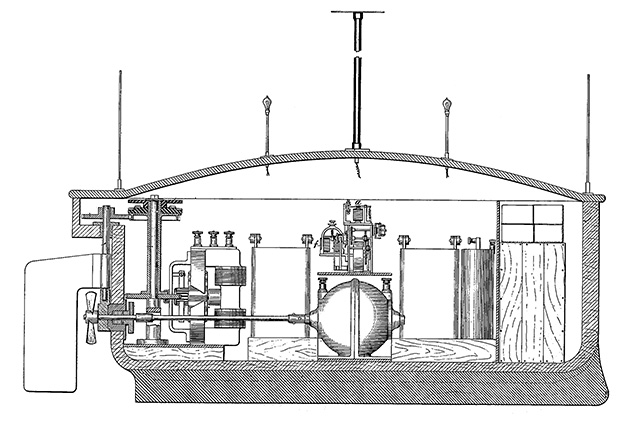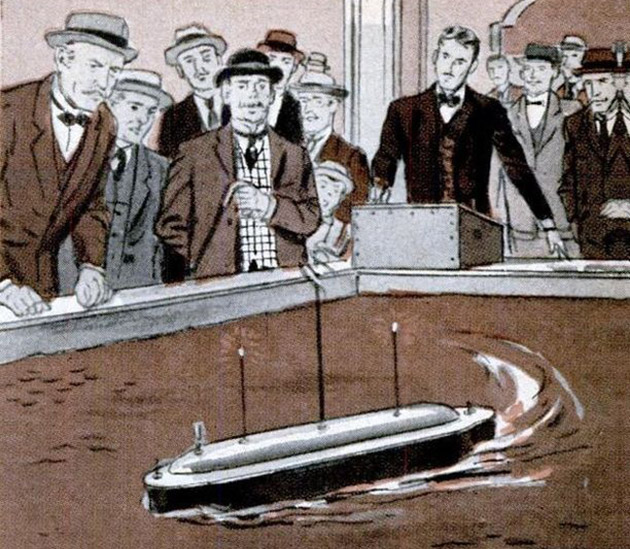On the other hand, for folks who are in awe of Nikola (moi), this is a little treasure.
From engadget:
The military complex has certainly embraced the concept of telerobotics, especially in the use of drones, but luckily the technology has also led to other, more peaceful applications. Drones have been used to entertain, take on laborious tasks and even deliver packages (and burritos!). As we pursue the development of remotely controlled and autonomous craft, we must tread carefully or suffer the same fate as the fabled Icarus. Nikola Tesla saw both the terrible as well as the beneficial consequences for this technology when he debuted the "remote control" and the jury is still out as to whether we'll succumb to a dystopian Terminator-style future or reach a peaceful stasis, where we harness the usefulness of robots and autonomous devices, and avoid the worst-case scenarios. Head past the break for more of the story.

Nikola Tesla's Remote Control Boat
Tesla once said, "The world moves slowly, and new truths are difficult to see." It was his way of responding to the crowd's stunned disbelief upon viewing his scientific wizardry at New York's Madison Square Garden in 1898. Using a small, radio-transmitting control box, he was able to maneuver a tiny ship about a pool of water and even flash its running lights on and off, all without any visible connection between the boat and controller. Indeed few people at the time were aware that radio waves even existed and Tesla, an inventor often known to electrify the crowd with his creations, was pushing the boundaries yet again, with his remote-controlled vessel.

Tesla's presentation, which was part of an Electrical Exhibition, was decried as magic by some, but it's unsurprising that others would focus on its potential as a weapon. It wouldn't be the first time that well-known inventors had made a foray into war devices. Thomas Edison had been involved in the Sims-Edison Electrical Torpedo Company and in 1892 demonstrated the merits of its wire-guided torpedo....MORE